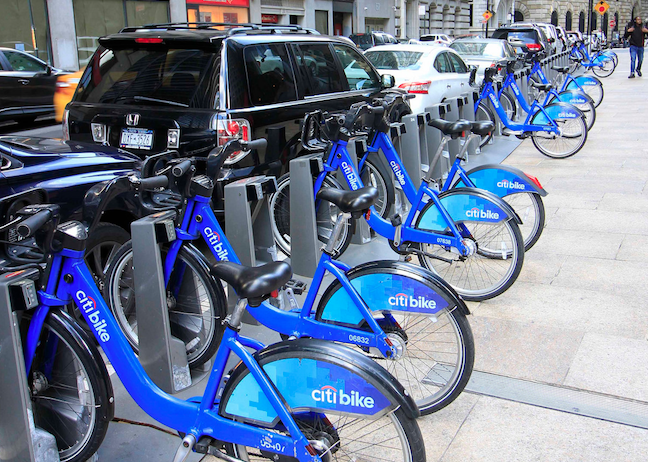New Yorkers Are Riding Citi Bike to Transit

Citi Bike is helping New Yorkers connect to trains and buses, according to a new report from the NYU Rudin Center for Transportation [PDF].
The report by Rudin Center researchers Sarah Kaufman and Jenny O’Connell draws on Citi Bike’s September 2016 trip data to analyze usage patterns.

In 2016, Citi Bike routinely hit ridership records as it continued to expand and draw new members. Annual subscriptions reached 115,000, after falling the previous year. This year, the growth should continue as new stations are coming this year to Harlem, Astoria, and Prospect Heights.
Almost half the trips last September — 48 percent — were under 10 minutes long, which indicates that riders are using bike-share to make short trips within their neighborhoods or “as last-mile connections to transit,” according to Kaufman and O’Connell.
“People are using Citi Bike in short distance that are perhaps too short to jump on a subway, but may be too long to walk,” Kaufman told the Daily News. “Citi Bike introduces a new options that… really cuts down on travel times.”
While Rudin didn’t directly survey riders about combining bike-share and transit, the authors note that a disproportionate number of trips originate near large transit hubs like Grand Central, Penn Station, and Union Square. In some locations, bike-share can also shorten the trip to the train or the bus — 18 percent of Manhattan residential buildings are closer to a Citi Bike station than to a subway entrance or bus stop.
This year, new stations are coming to Harlem, Astoria, and Prospect Heights. The de Blasio administration has no public plans to extend Citi Bike beyond that zone, but the City Council is agitating for further expansion. Looking ahead, Kaufman and O’Connell anticipate that the service can be valuable in many more neighborhoods beyond the current service area, as long as adequate station density and proximity to transit are maintained.





